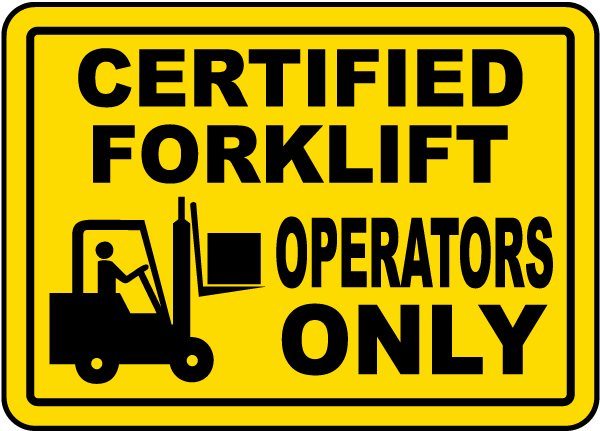
Finally, report any unsafe behavior by forklift operators or pedestrians to your supervisor. Use these to your advantage to travel safely around the workplace.

Your workplace may have installed controls to ensure safety such as convex mirrors, speed limits, or extra lighting for dim areas. Don’t take shortcuts between stacked materials, and never climb over guardrails. Even if a forklift stops, its load may not. Stay out of the path that the load can fall. Never ride on forklifts unless you’re authorized and have a safe place to ride, and never pass under an elevated load. Avoid distractions when walking into forklift traffic areas. Follow Basic Safety ProceduresĬonsider wearing highly visible protective equipment to make it easier for forklift operators to see you. Before entering traffic areas, stop, listen, and look both ways to make sure a forklift isn’t coming towards you. Forklifts are supposed to yield to pedestrians, but they may not be able to see you or stop quickly, so always yield to forklifts unless you have made eye contact with the operator and they have given you the signal to go. In areas with no designated travel lanes, stay to one side to allow room for forklifts to pass. Make sure you only walk in pedestrian lanes. Traffic rules apply to pedestrians as well as forklifts. Proceed through the area only when the operator signals that they see you.Before entering the forklift lane, stop, look both ways, and make eye contact with the operator.Inform them that you’ll be entering the forklift area.If you can’t see a forklift operator, they probably can’t see you. Stand clear of a forklift while it’s turning.Move away from the forklift before the operator moves it, do not wait for the forklift to move away from you.If you must approach a forklift, approach it from the side AFTER it has stopped.Here are some practices to stay clear of forklifts at work: It is important to remain out of the way of a moving forklift. Remove materials and debris from walkways immediately, or speak to a supervisor if you can’t remove them yourself. If obstructions occupy pedestrian paths, people may walk in the path of forklifts. If there is not enough room, it must be closed off to pedestrians while forklifts are in use. In areas where pedestrians and forklifts have to travel the same paths, there must be enough space for pedestrians to walk safely. If a permanent barrier can’t be put in place, there should be stripes painted on the ground to show where pedestrians should walk. Pedestrian walkways may have permanent railings or other barriers to keep pedestrians from entering forklift paths. Some workplaces have designated walkways for pedestrians. Speak to your supervisor if you see forklift operators acting in an unsafe manner. Each of these factors contributes to the risk of injury, but untrained forklift operators can also cause accidents.

The sharper the turn, the wider the angle the back of the forklift can take, and it can swing out and hit pedestrians. When forklifts are turning they are especially dangerous. Forklifts are loud machines, and in noisy workplaces, it is hard for operators and pedestrians to hear one another.

Tall or bulky loads can severely restrict visibility as well. The forks, mast, and cage can reduce visibility. Forklifts tip over easily and cannot brake quickly. Pedestrians must understand the hazards that come with working around forklifts. However, most forklift accidents are preventable when pedestrians follow safe practices in the workplace. Pedestrians who are not trained to watch out for forklifts or who don’t comply with workplace safety policies have an increased risk of being struck by forklifts. Pedestrians can be struck or crushed by forklifts, hit by objects falling from a forklift, or fall off a forklift they are riding on. Many of these injuries are serious or fatal. Pedestrians suffer 26% of all forklift-related injuries in U.S. Unfortunately, forklift accidents are also common.įorklift accidents are particularly dangerous to pedestrians. They’re most common in warehousing and storage facilities, but they can be used in any industry that requires the movement of heavy materials.


 0 kommentar(er)
0 kommentar(er)
